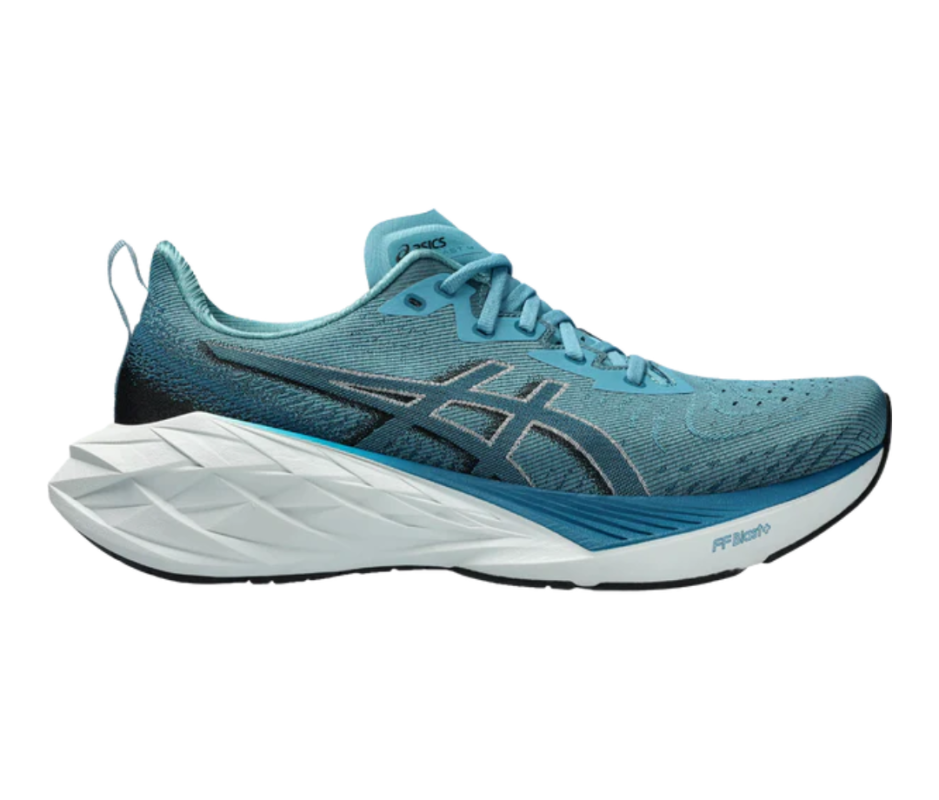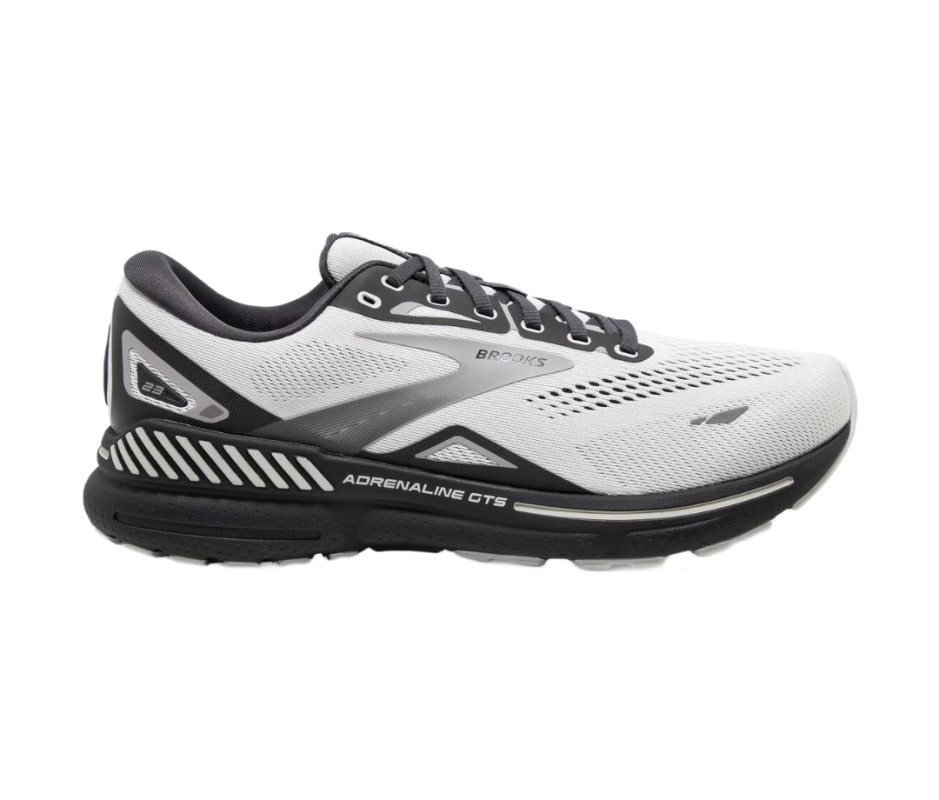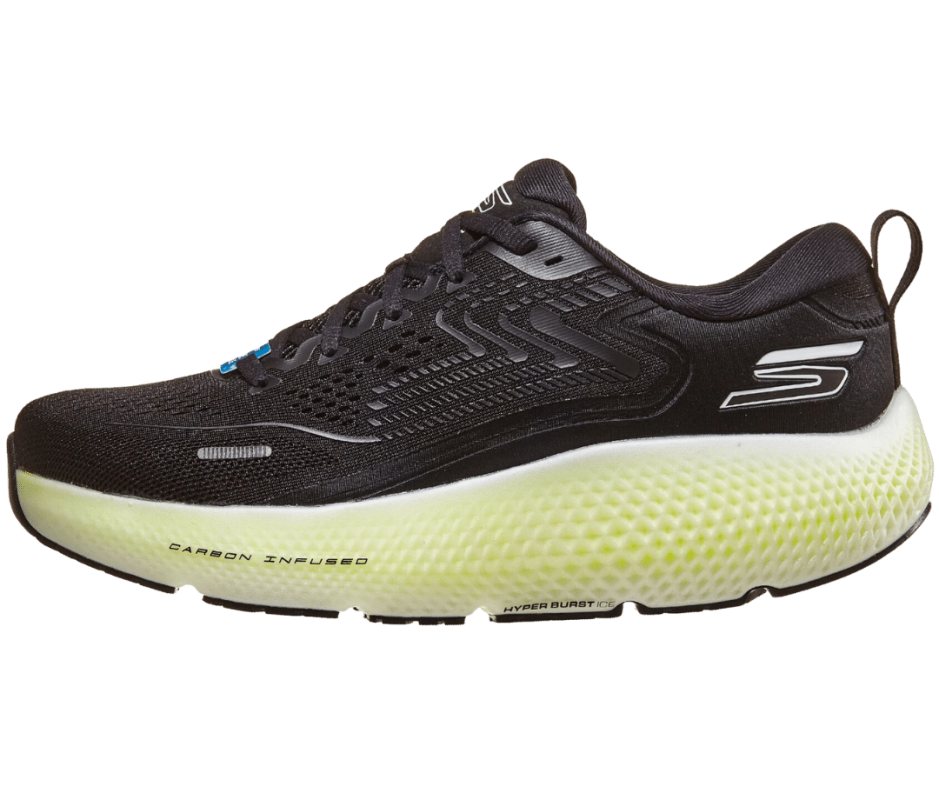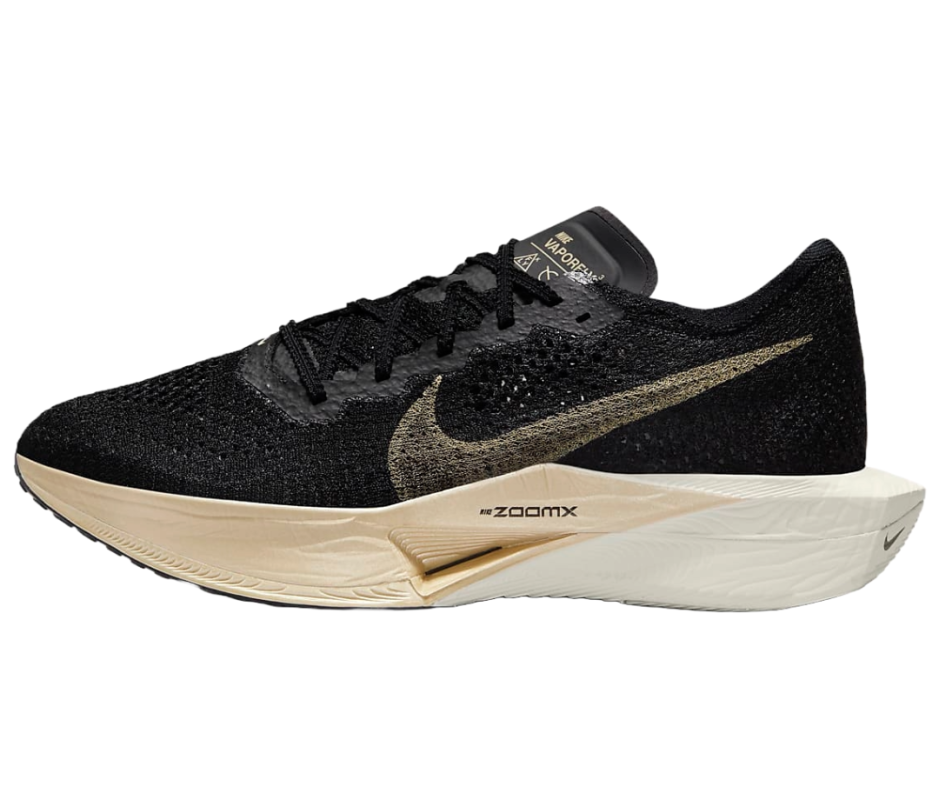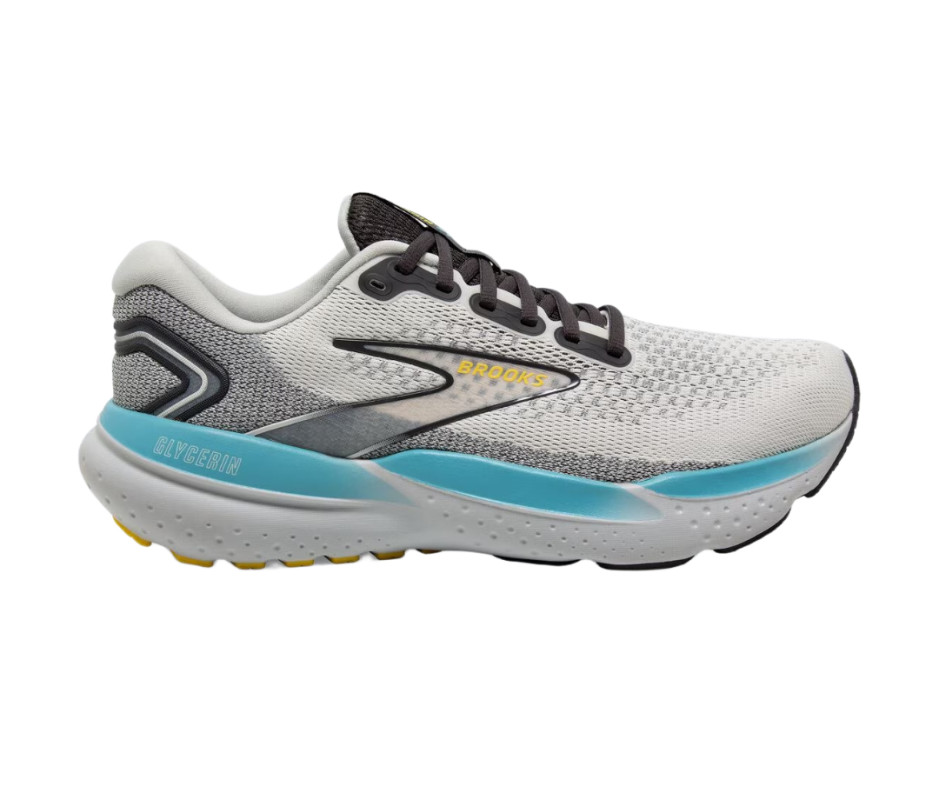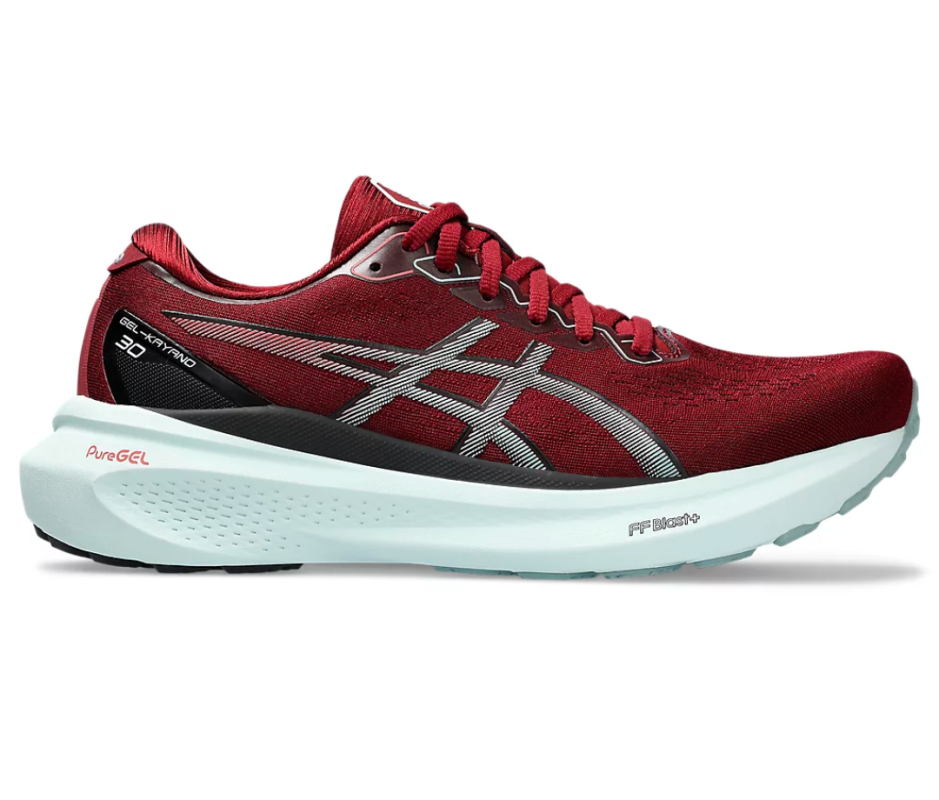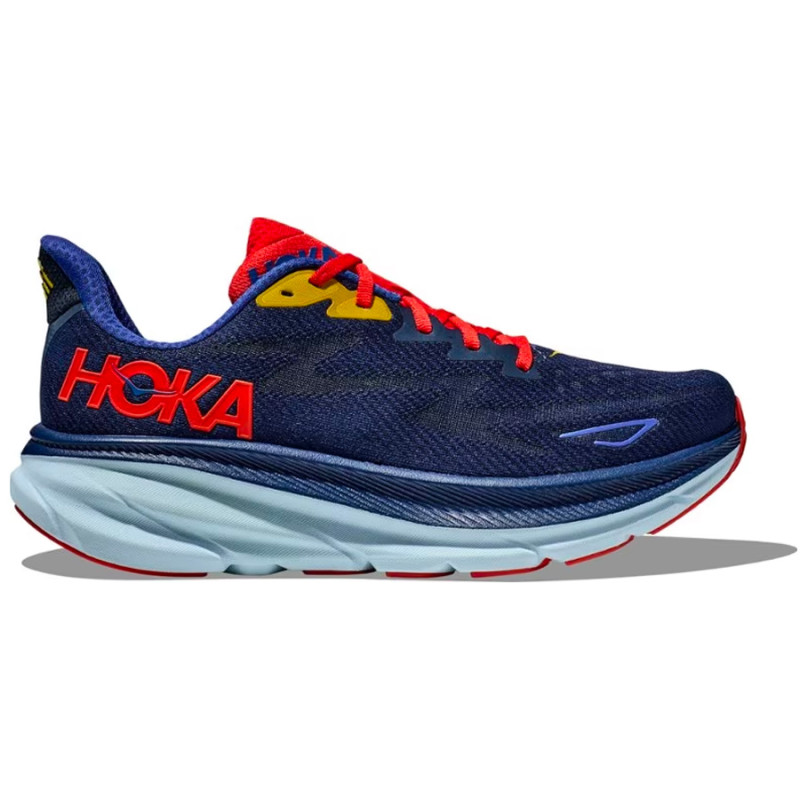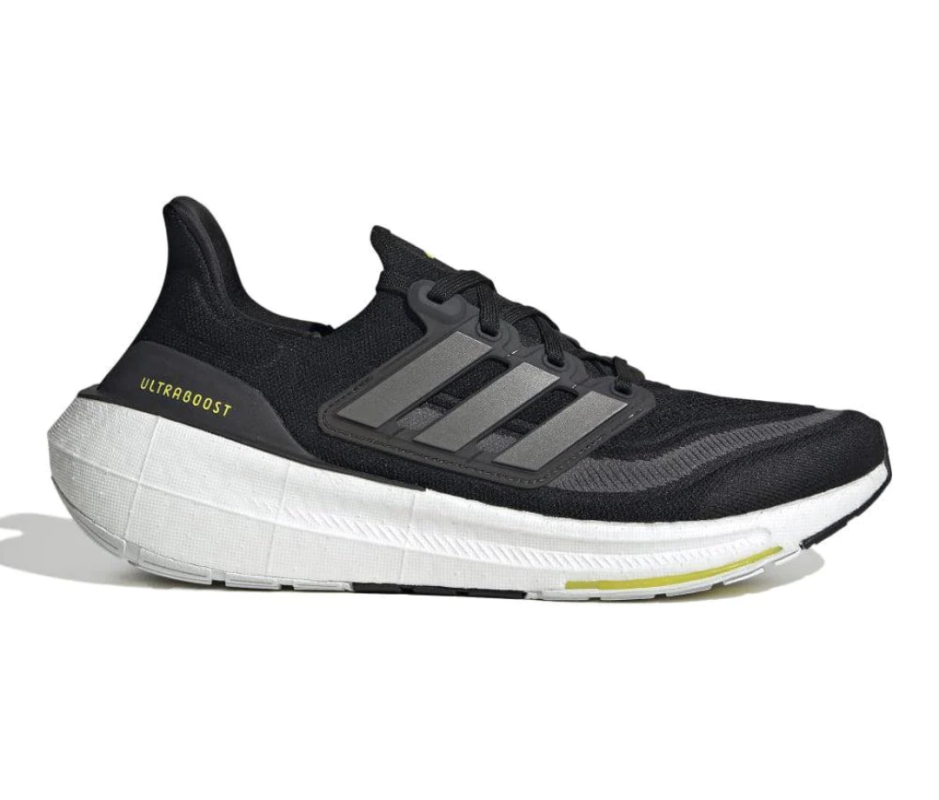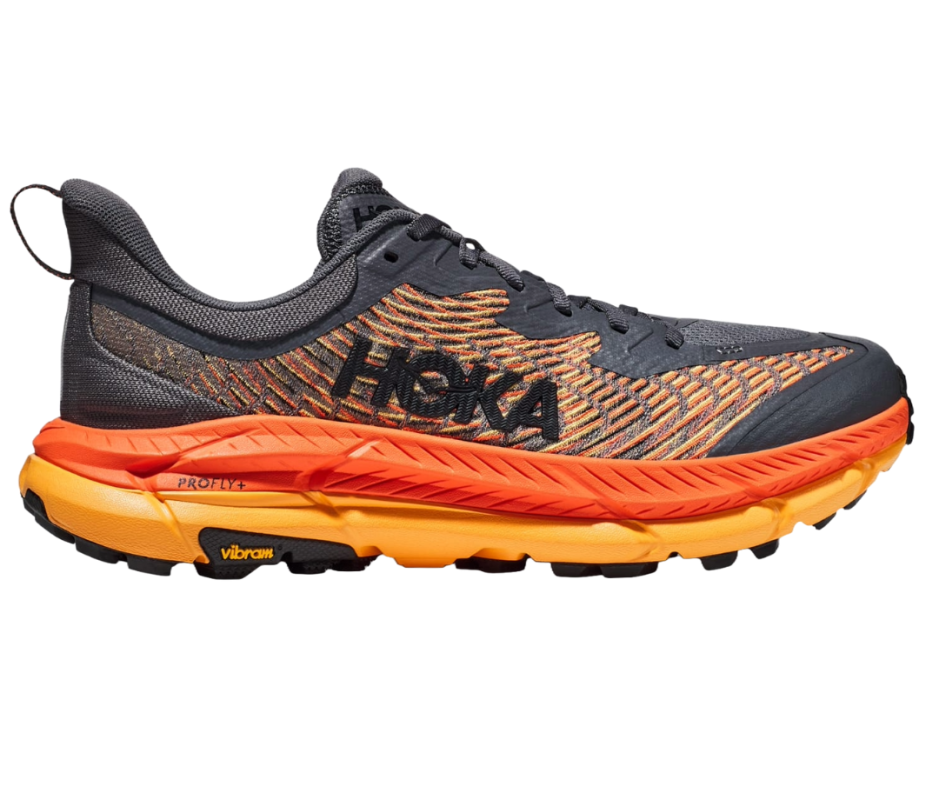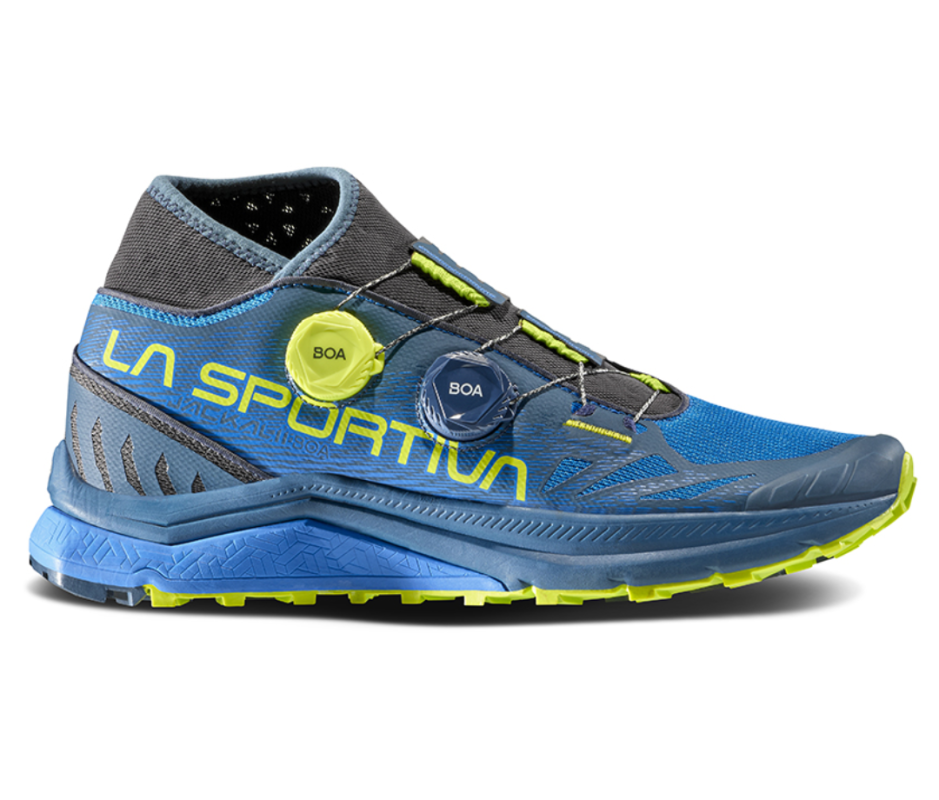Health
We Tested Dozens of Running Shoes. These Are the Best for High Arches

Men’s Journal aims to feature only the best products and services. If you buy something via one of our links, we may earn a commission.
If you have high arches, you often have to search far and wide for running shoes that work for you. Although not always the case, many times because it’s because you experience a constant ache in the midfoot caused by overworking your plantar fascia, the thick but flexible strand of tissue that connects your heel to the ball of your foot.
I’ve had plantar fasciitis since I was in high school, and while I’ve mostly gotten it under control, there are still some weeks where I can’t escape arch soreness. If you’re like me, when you find a running shoe that’s comfortable, you stick with it.
After testing dozens of pairs, I rounded up the best running shoes for high arches. I also spoke with Dylan Sykes, D.P.T. and 2:25 marathoner, on how to choose the best shoe for your specific needs. The best overall pick is Asics Novablast 4 because it’s a versatile shoe, responsive for the days you’re feeling the need for speed, but plush enough for easy days.
Related: We Tested Dozens of On Running Shoes. These Are the Best
Best Overall Running Shoe for High Arches: Asics Novablast 4
Courtesy Image
When I’m out running I don’t want to think too hard about what’s on my feet; it either works or it doesn’t. Asics Novablast 4 just works. Over the past couple months, the it’s been the first shoe out of my closet for standard training miles.
As one the best running shoes from Asics, the Novablast midsole is bouncier but stiffer than the previous version, yet it retains its plush, snug ride. While the upper feels more insulated than the previous Novablast, it locks my foot down better, which keeps me riding right on the super supportive midsole. I felt the older version lacked arch support, as my foot rolled inward slightly. The updated midsole feels a lot more balanced for any runner, especially high arch runners like me. All this adds up to a versatile shoe: responsive for speedy days, plush for easy days. For $140, there aren’t many better trainers out there.
As with many plush trainers these days, the outsole is mainly foam, so it wears down relatively quickly and doesn’t grip bumpy terrain as well as other shoes. But don’t let that stop you from enjoying the ride it provides.
Weight: 9.2 ounces
Heel-Toe Drop: 8mm
Pros:
- Doesn’t feel wobbly or unstable for a max-stack shoe.
- Soft and supportive ride, great for high arches.
- Versatile for an everyday trainer.
- Excellent value.
- New upper provides better lockdown than previous version.
Cons:
- New upper is more insulated, which can make feet feel warm.
- Not super durable or grippy.
Best Stability Running Shoe for High Arches: Brooks Adrenaline GTS 23
Courtesy Image
Brooks Adrenaline GTS 23 has firm “guiderails” that run along each side of the shoe to prevent the foot from collapsing inwards or rolling outwards. While stability shoes don’t always suit runners with high arches (as it depends on whether or not you overpronate), the Adrenaline is plush enough to balance out the firmer stability features.
Similar to Brooks Ghost 15, the Adrenaline is nearly universally beloved for its cushioning and fit. The shoe’s popularity isn’t a fluke; it’s just a testament to how well it works for so many people, myself included. It’s easy to find a version that fits you right, a colorway that you’re excited to wear, and once you’re out logging miles, the shoe is comfortable and fun to run in.
Weight: 10.1 ounces
Heel-Toe Drop: 12mm
Pros:
- Reliable fit and comfortable, plush feel.
- Not overly stiff, but still supportive.
- Classic, utilitarian upper and lacing.
Cons:
- High heel-toe drop isn’t for everyone.
- Stability features may feel weird to neutral runners.
Best Max Cushion Running Shoe for High Arches: Skechers GoRUN Max Road 6
Courtesy Image
I try not to break out my favorite max cushion phrase too much, but Skechers GoRUN Max Road 6 are certified ‘plush puppies.’ When my dogs (feet) are barking, I slide on the latest Max Road for easy miles.
The Max Road 6 is a big step up in cushioning from the previous version, and the carbon-infused midsole is thick and soft. They have one of my favorite road outsoles, too—made from Michelin rubber. Not only running long in these, I also spent two 12 hour days moving my things and my feet were just fine.
I notice that the shoe cradles my arch from heel to toe, making it a great choice for high arch runners. I value that support—and the extremely supple feel underfoot—for recovery runs. Sure, they aren’t fast or versatile, but at $130 they are more affordable than most max cushion competitors. One last thing I noticed: the upper isn’t breathable, so the shoe heats up after awhile. However, the upper never leads to slippage or irritation.
Weight: 11 ounces
Heel-Toe Drop: 6mm
Pros:
- High stack height and carbon-infused cushioning makes for super comfortable ride.
- Accommodating, locked down fit.
- Durable, tacky midsole rubber.
Cons:
- Thick, unbreathable upper.
- Not versatile.
Best Racing Shoe for High Arches: Nike Vaporfly 3
Courtesy Image
I probably don’t need to talk about how good of a shoe the Vaporfly is, as it’s one of the most famous running shoes of all time. I’ve tried a ton of elite racing shoes, and Nike Vaporfly 3 works for my arches.
A few quick highlights: It weighs practically nothing (6.5 ounces), it’s super peppy yet comfortable over long distances, and the upper is extremely light and breathable. The midsole is narrow, but that slimmed down portion hugs the arch, so when properly laced, the shoe supports and comforts the foot.
Nike has released other models since the Vaporfly 3, like the Alphafly, which some people prefer. But if you need a pair of racing shoes and you have a high arch, then the Vaporfly 3, one of the sport’s most popular racing shoes, is a great pick. However, the lacing can be a bit flimsy, and like all super shoes, they wear down pretty fast. So use them wisely, because, according to studies, they do indeed improve your running performance.
Weight: 6.5 ounces
Heel-Toe Drop: 8mm
Pros:
- Light, bouncy, and comfortable.
- Breathable upper.
- Proven to improve running performance.
Cons:
- Bad lacing system.
- Wears down quickly.
Related: We Tested Every Running Shoe Asics Offers. These Are the Best
More Running Shoes for High Arches We Love
Best Recovery Running Shoe for High Arches: Brooks Glycerin 21
Another popular high cushion shoe is Brooks Glycerin 21. It’s my favorite Brooks shoe, and I’m still logging tons of early week recovery runs in these. While they have a similarly soft midsole feel to the Skechers GoRUN Max Road, these lightweight trainers are a lot more versatile.
At 9.8 ounces (or 9.3 in the StealthFit version) the Glycerin 21 is light enough for speedwork, and though the foam is really soft underfoot, it has more pep than expected. The heel counter is really supportive, and the laces are comfortable. This shoe is somewhat distinct from others on this list in that it doesn’t have a notably stacked arch. But as I broke these shoes in, the insole molded to my foot shape. The supple foam cushions and supports the feet during impact, so despite the lower arch stack, the shoes never feel like they are taxing your plantar fascia.
Weight: 9.8 ounces
Heel-Toe Drop: 10mm
Pros:
- Lightweight enough to be versatile trainers.
- Soft and comfortable cushioning, while maintaining plenty of pop.
- Upper and lacing setup works well for many foot shapes.
- Durable outsoles.
Cons:
- Not the most breathable upper on the list.
- No stacked arch.
Best Everyday Running Shoe for High Arches: Asics Gel-Kayano 30
As one of the best Asics shoes this year, Gel-Kayano 30 has picked up a lot of miles in recent weeks. I’ve previously experienced both lower leg injuries and arch pain, so the Kayano’s supportive, plush cushioning and high heel-toe drop has placed stabilizes and supports my feet. While I’m not breaking any speed records in these, I really appreciate the easy miles in shoes that feel comfortable and stable, but not overly squishy or plodding. Additionally, the stability features, which are totally unobtrusive, cradle the arch. For pretty much every run—save for fast workouts or races—the Gel-Kayano makes a superbly supportive shoe for runners with high arches and plantar fasciitis.
Weight: 10.7 ounces
Heel-Toe Drop: 10mm
Pros:
- Soft, stable, and supportive.
- Durable outsole.
- Snug, sock-like upper and comfortable laces.
Cons:
- Too heavy and plush for faster runs.
Best All-Around Running Shoe for High Arches: Hoka Clifton 9
The latest iteration of the popular Hoka Clifton is a comfortable, tried-and-true high arch shoe. While I don’t think the Clifton 9 feels like it was made exclusively for folks with high arches, there are plenty of runners who benefit from the midsole structure.
Elite runners and casual walkers alike sing the praises of the Clifton. I’ve run in three different versions of this shoe, it just works so well. The shoe is lightweight (under 9 ounces). It’s got an approachable 5 mm heel-toe-drop, ideal for those who don’t land so hard on their heels, but not low enough to scare off runners who aren’t used to it. And the Clifton has a really lockdown fit for a stable ride. Finally, there is supportive foam that reaches under the arch—right where you need it.
Weight: 8.7 ounces
Heel-Toe Drop: 5mm
Pros:
- Lightweight and versatile.
- Cushioning works great for high arch runners.
- Great value at under $150.
Cons:
- Low drop isn’t for everyone.
- Not as soft as Hoka’s max stack offerings.
Best Shoe for Running and Casual Wear: Adidas Ultraboost Light
Adidas Ultraboost Light is my daily shoe. I walk my dogs in them, travel with them, and often just wear them around the house. The Ultraboost Light midsole is super comfortable and stable, and the sock-like upper, while not the most breathable, is stretchy and fits perfectly.
If you go with a simple colorway, you don’t need to travel with multiple shoes. These look like a modern sneaker, but perform like some of the best running shoes out there. The forefoot and heel cushioning is plentiful, and the heel contour cradles the foot perfectly.
While the $190 base price is a bit steep, old colorways often go on sale. And for how versatile these are as everyday shoes and running shoes, the price is actually well worth it.
Weight: 10.5 ounces
Heel-Toe Drop: 10mm
Pros:
- Look like a modern sneaker.
- Boost foam is supple and this version is lighter.
- Soft, stretchy upper is very comfortable.
Cons:
- A tad expensive for the performance.
- Not super fast or responsive.
Best Everyday Trail Shoe for High Arches: Hoka Mafate Speed 4
For trail runners looking for something a bit softer, Hoka Mafate Speed 4 is arguably one of the most versatile trail shoes ever made. While Hoka has long been recognized for the comfort of their foam, their recent push for more responsive offerings in the PROFLY lineup are great. The Mafate Speed 4 features a dual density midsole that is both firm and soft, maintaining a ton of comfort for high arches. And the versatility of the Mafate means that these remain the right choice for long, patient trail miles as well as hard uphill efforts and speedy descents. Unfortunately, I did notice some heel slippage if I didn’t lace tight enough.
Weight: 10.4 ounces
Heel-Toe Drop: 4mm
Pros:
- Soft and supportive dual-density PROFLY midsole.
- Excellent traction.
- Very versatile for all kinds of trail running.
Cons:
- Had to lace tightly to avoid heel slippage.
Best Nimble Trail Running Shoe for High Arches: La Sportiva Jackal II (BOA)
While La Sportiva puts out a ton of really technical and capable trail runners, the Jackal II with BOA lacing is the brand’s best. If you have high arches but don’t like the feel of maximalist shoes, then the Jackal II is right up your alley. They’re really comfortable but also light and nimble, with responsive foam and tons of grip. And the arch support hits right where you need it.
Part of what makes these feel so comfortable for high arch runners is the secure, locked-in BOA fit. You just click the knobs on the side of the shoe until the shoe fits your foot shape perfectly. As a result, they make a great trail racer or fast shoe for trail runners who don’t want a big clunky midsole.
Weight: 10.5 ounces
Heel-Toe Drop: 7mm
Pros:
- Excellent blend between speedy performance and bouncy cushioning.
- BOA system makes these so easy to secure to your foot.
- Grippy, outsole rubber.
- Breathable upper.
Cons:
- Stiffer than some high arch runners may prefer.
Related: We Tested a Dozen Saucony Running Shoes. These Are Our Favorites
Do High Arches Cause Plantar Fasciitis?
According to Sykes, high arches stiffen the feet while running, which in turn sends more impact force to the forefoot and rearfoot. The plantar fascia supports your arch, and so high arch runners often feel additional strain on this tissue because it has to stretch more. For that reason, a high arch runner often finds comfort in high cushioned shoes.
Be careful, however. “A max stack shoe can sometimes act as a bandaid for arch pain rather than fixing the problem,” Sykes says. Similarly, if you were recommended orthopedic insoles by a doctor, Sykes says that while they alleviate short-term pain, they won’t address the root of your arch pain. Because, he says, there’s no one-size-fits-all in running footwear. Find a pair that works for you—but ease into using any new shoes.
Sykes recommends starting with one run per week in the new shoes, then bumping up to two, and so on for a few weeks to help your body adapt to the new gear. I’ve made this mistake a few times, and it has cost me weeks of training due to injury. So try a few things to see what works and stick with your successful formula.
Why You Should Trust Me
Aside from my personal experience with plantar fasciitis and arch pain, we got insight from folks who really know what they’re talking about. That’s why I chatted with Sykes, an accomplished runner and D.P.T.
Additionally, I logged hundreds of miles in over 60 different pairs of running shoes over the past year. And like many runners, I’m not immune to injury, so I make sure to note shoes that work well and cause no issues.
On top of my individual testing, I worked with a team of testers over a variety of reviews and gleaned insight from all types of runners, from heavier men looking for maximum support to sub-4:00 minute milers.
Health
A Healthy Lifestyle Can Add Years to Life, Despite ‘Bad’ Genes

May 9, 2024 – Were you born with family genes that predict a short life? Fear not; it turns out that having such genes is not a death knell but an opportunity.
In fact, new findings suggest that adopting and sticking to a combination of lifestyle changes may be one of the most important ways to defy these “bad” family genes.
The study, which was published in late April, looked at the combined effect of lifestyle and genetics on human lifespan based on the records of over 350,000 people of European ancestry who were followed for an average of 13 years.
After dividing the people in the study into three groups based on predicted lifespan (long, intermediate, and short), the researchers found that those who had a high genetic risk for short lifespans faced a 21% increased risk of early death, compared with those with low genetic risk, regardless of lifestyle. Moreover, people with lifestyle habits considered unhealthy had an increased risk of dying early by 78%. But following a healthy lifestyle appeared to change the genetic odds by as much as 62% and add 5.2 years to life.
“We identified an optimal lifestyle combination of four lifestyle factors that offered better benefits for prolonging human lifespan: no current smoking, regular physical activity, adequate sleep duration, and a healthy diet,” said Xue Li, PhD, a study co-author and professor of big data and health science at the Zhejiang University School of Medicine in Hangzhou, China. “Our advice is to focus on building and sticking to healthy habits, no matter what your genes say.”
The Early Bird Gets the Worm
For the study, the researchers used an index called the polygenic risk score (PRS) to arrive at a person’s overall genetic tendency to have a short or long life. The score combines multiple changes in DNA (known as variants) that influence life expectancy. Li said using this tool with screening and genetic counseling might help people make informed decisions about their health.
But it might be difficult to mimic this approach; not only is the PRS not part of routine clinical practice, but genetic counseling is also not routinely offered. And testing through private companies can be costly. But take heart; there’s still a lot of steps you can take.
“There’s an enormous amount of literature that has looked at lifestyle and longevity and genes and longevity,” said Pam Factor-Litvak, PhD, a professor of epidemiology at the Columbia University Mailman School of Public Health in New York City. She said that gene expression can be changed by environmental factors (for example, smoking or diet). Factor-Litvak also explained that markers of healthy aging called telomeres (DNA and protein structure responsible for cell division) are also impacted by lifestyle factors. A healthy lifestyle lengthens telomeres and prolongs a cell’s life and ability to divide, and an unhealthy one shortens them, causing the cells to die and tissues to age.
“The earlier you start a healthy lifestyle, the better off you are,” she said.
To Factor-Litvak’s point, the cutoff used in the study was 40 years, with findings showing that people with good lifespan genes and healthy lifestyle habits had an average gain of 6.69 years of life expectancy, compared with people with bad lifespan genes and unfavorable lifestyle habits.
But older adults can still benefit; like dominoes, the effects of lifestyle changes add up.
William Samuel Yancy Jr., MD, an internist and medical director of the Duke Lifestyle and Weight Management Center in Durham, NC, said that he treats a lot of people in their 70s and 80s who start to feel better and become stronger when they add one of the four lifestyle factors cited in the research: healthy eating.
“They’re more energetic, get stronger, and are less likely to get injured or have falls; you get pretty immediate benefits,” he said. “And obviously, there are some long-term benefits over the following years, depending what kind of changes they make.”
Yancy also said that as people age, they are able to make their health a priority, which helps them stick to healthier lifestyles.
Selvi Rajagopal, MD, MPH, an assistant professor of medicine at the Johns Hopkins University School of Medicine and an obesity medicine specialist in Baltimore, said she’s also had older patients who’ve benefited from lifestyle changes, especially when it comes to strength and resistance training. “We know that falls are one of the major risk factors for early mortality,” she said.
Bad Behaviors Go Together
One bad habit tends to lead to another, which leads to another, and so on.
“That’s one reason why the combination of the big four – smoking, physical activity, sleep, and healthy diet – is bigger than the individual effects,” said Factor-Litvak.
The study authors referred to those for habits as “the optimal lifestyle combination.”
Notably, these big four were also shown to convey better benefits for a longer lifespan than other combinations, according to the study results. But just as bad behaviors go together, so do healthy ones.
“Typically, when people lose 10% to 15% of their initial body weight, they start to experience significant improvements in their mobility and joint function. And so, they feel more inclined to engage in higher levels of physical activity, where there’s a really positive cascade effect,” Rajagopal said.
The challenge is that few people are able to stick with a composite healthy lifestyle like the one tested in the study. “My recollection is that about 25% of people are doing all of these healthy lifestyle practices simultaneously,” said Yancy. Toward that end, there may be something to be gained by starting small.
“It’s unrealistic and unsustainable for someone in the modern age with lots of life commitments and stressors to do all of the things right. Instead, start with a few small, meaningful, actionable items that you can do. Then make it part of who you are (it usually takes 8 to 10 weeks to form a habit),” said Rajagopal.
Then? “Once you’ve nailed it, make a checkbox for the next thing, and have an accountability partner who can walk this journey with you,” she said.
Health
How to Create and Deliver High-quality Student Interventions

Student interventions are an essential part of any K-12 education system. Each student’s needs are unique, and some students might need additional guidance beyond what they get through whole class instruction. A multi-tiered system of supports (MTSS) or a Response to Intervention program (RTI) ensure that students’ various learning needs are addressed, allowing everyone to thrive.
In a tiered intervention system, all students receive core instruction. Those who need more help in meeting academic or behavioral goals then receive additional instruction in a small group environment, such as in reading or math groups. Students who need further help might receive one-on-one support through specialized instruction, behavioral support, or even replacement instruction as necessary. Along with instructional practices, the learning environment can support intervention.
Whether the interventions are academic, social emotional, or behavioral in nature, high-quality student intervention systems all share some key characteristics. Here are four critical strategies for designing and delivering student interventions that lead to success.
Information is Power
For interventions to be effective, educators must identify every student’s strengths and needs, then match each child with an appropriate intervention, monitor their progress, and make adjustments as needed. This requires educators to collect and analyze social-emotional, behavioral, and achievement data for every student on an ongoing basis.
The Center on Multi-Tiered System of Supports from the nonprofit, nonpartisan American Institutes for Research (AIR) describes four essential components of an MTSS framework.
Screening
This is a systematic process for identifying students who might be at risk for not meeting learning outcomes. Screening is generally conducted three times a year through reliable and valid assessment tools.
Multi-level Prevention System
This is an integrated continuum of academic, social emotional, and behavioral instruction and intervention that includes three tiers of intensity.
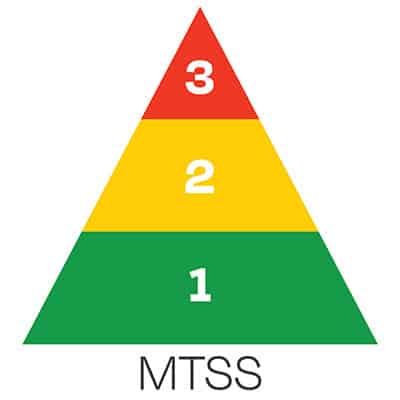
Progress Monitoring
This involves the use of valid and reliable assessment tools to monitor students’ progress, gauge their response to interventions, and evaluate the effectiveness of these supports. If students aren’t making sufficient progress, they might be paired with a different intervention or moved from Tier 2 to Tier 3 intervention.
Data-based Decision-making
All of this activity relies on the collection and use of student performance data, including grades, test scores, teacher observations, and the results from student screening and progress monitoring.
It Takes a Village
Decisions about which students need which types of interventions are best made collectively, with a student support, success, or intervention team regularly reviewing the data and discussing the best course of action for specific students.
Teams should include representation from a broad array of roles and perspectives, including administrators, counselors, and both regular and special education teachers. The process should be collaborative, with everyone on the team having a voice. The most successful teams are made up of volunteers, so leaders should try to assign members who genuinely want to participate.
The Center on Multi-Tiered System of Supports provides guidance on creating effective school-based intervention teams.
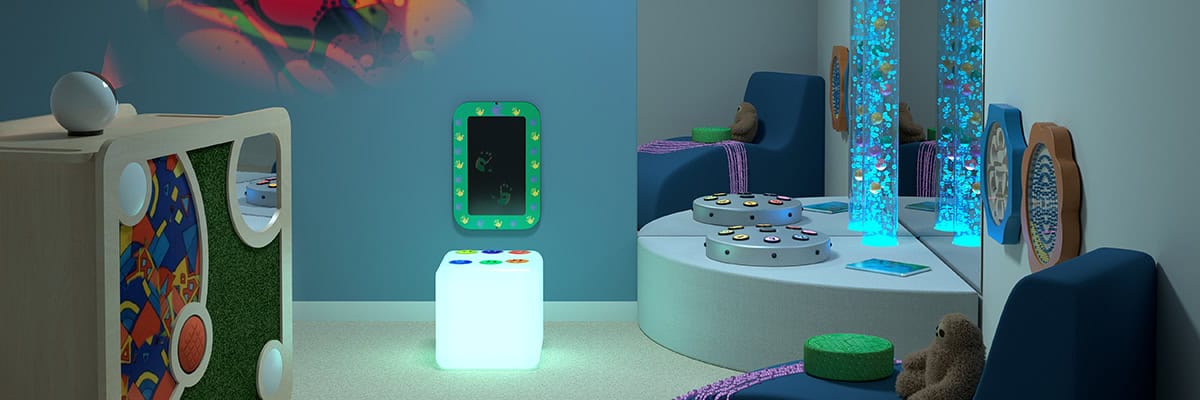
Effective Interventions Require High-Quality Resources and Environments
This might seem obvious, but you can’t deliver effective interventions without high-quality (and evidence-based) instructional resources to support them. The right resources can foster creativity and self-expression, which are essential components of social emotional learning. The learning environment should also be utilized to support instruction and intervention. Ensuring that the environment supports instruction allows students to build agency for their learning, collaborate, and have choice and voice to learn where they best learn is critical to support the instructional practices.
Research indicates that the design of the physical learning environment has a big influence on both the type and quality of instruction that occurs in that space. To maximize the effectiveness of student interventions, think about the design of the classrooms and other spaces where this learning occurs. Learning environments can be designed to support student interventions at each tier of instruction.
In Tier 1, for instance, flexible furnishings that can be moved around the room easily to create various student groupings make it easy to transition from whole group to small group instruction or even individual learning. The right type of classroom design can also promote student wellness and social emotional learning. In this tier, a school might also consider how they encourage social interactions and collaboration by providing a “hallway hangout” with soft seating or small group work areas. Schools may want to consider the use of acoustics to quiet noise in a more public area. These areas may also be used with tier two interventions.

Tier 2 environments can allow students to take respite or support the need for a quiet space to work. This can be a chill corner in the back of a classroom that has soft seating, fidgets, or even sensory panels. Again, some of this instruction at tier two can benefit from using a “hallway hangout” space for small group or individual support.
Students who need Tier 3 behavioral intervention might benefit from spending time in a Snoezelen® multi-sensory room. Students with sensory processing concerns may benefit from interventions focused on proprioceptive input, vestibular input, or oral motor, language, or auditory skills. A Snoezelen® multi-sensory room allows a student to control their environmental inputs by changing the colors or sounds in the room, among other things.
Fostering Success
With interventions playing an increasingly important role in K-12 instruction, how you design and deliver these programs is fundamental to student success. By following this advice, you can develop highly effective student intervention programs that enable everyone to flourish.
Dr. Sue Ann Highland
Sue Ann Highland, PhD, is the National Education Strategist for School Specialty. She has more than 25 years of experience as an educator, administrator, and consultant with school systems across the United States, with broad expertise in designing and creating highly effective learning environments.
Read more by Dr. Sue Ann Highland–>
Health
How to help your teen manage college rejection disappointment – CHOC

Published on: May 9, 2024
Last updated: April 16, 2024
A CHOC mental health expert offers tips for parents to help their teens with college rejection disappointment.
Link: https://health.choc.org/how-to-help-your-teen-manage-college-rejection-disappointment/
-

 African History4 months ago
African History4 months agoBlack History Facts I had to Learn on My Own pt.6 📜
-

 African History4 years ago
African History4 years agoA Closer Look: Afro-Mexicans 🇲🇽
-

 African History1 year ago
African History1 year agoPROOF AFRICAN AMERICANS AIN'T FROM AFRICA DOCUMENTED EVIDENCE
-

 African History2 years ago
African History2 years agoHow Did Normal Medieval People Survive Winter? | Tudor Monastery Farm | Chronicle
-

 African History3 years ago
African History3 years agoThe Entire History of Africa in Under 10 Minutes – Documentary
-

 African History3 years ago
African History3 years agoWhat happened to the many African Kingdoms? History of Africa 1500-1800 Documentary 1/6
-

 African History2 years ago
African History2 years agoAFRO MEXICO: Black History In Mexico!
-

 African History1 year ago
African History1 year agoA Black African King in Medieval European Art

